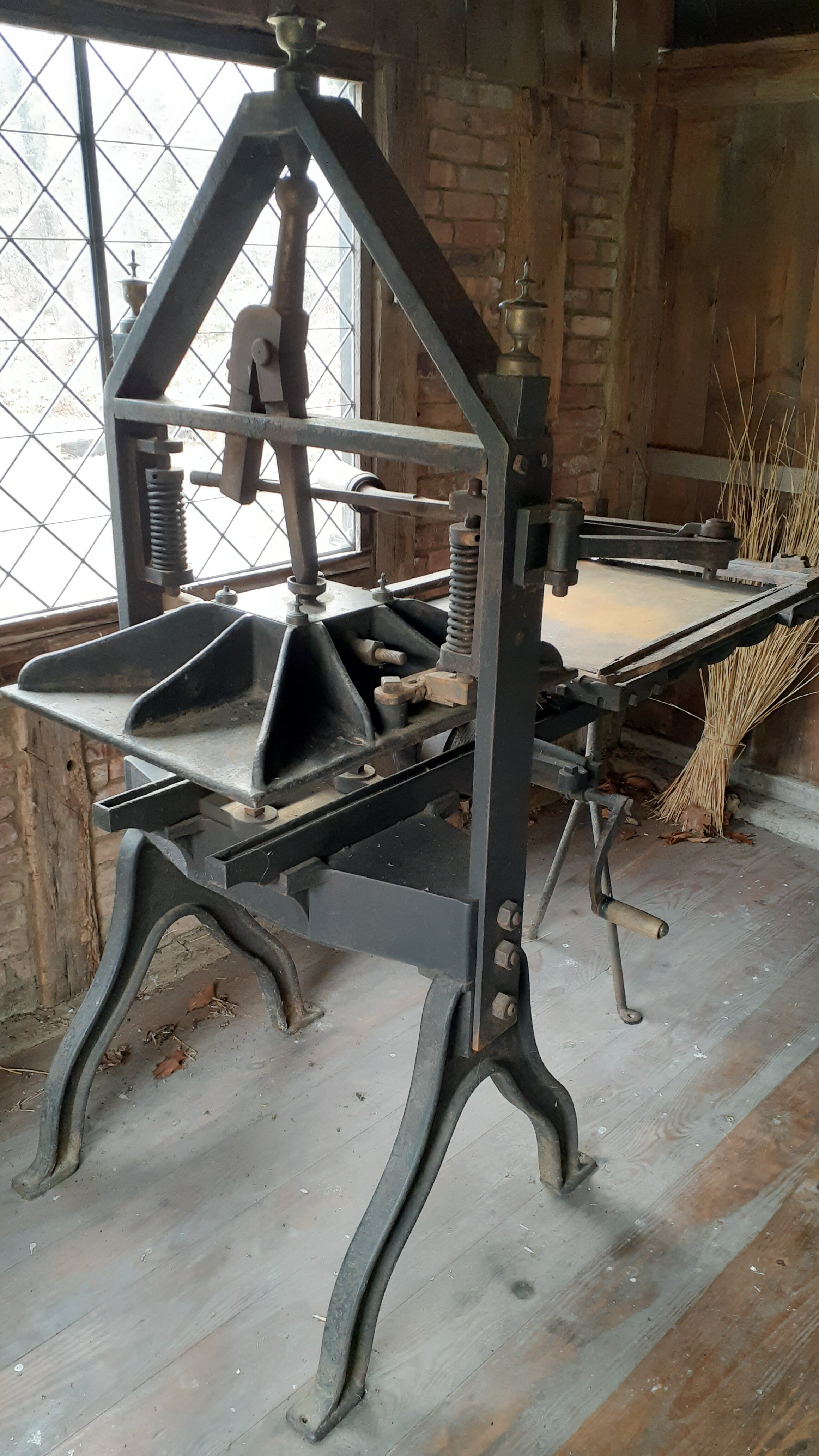1850-75 PHILADELPHIA PRESS
Adam Ramage is best known for creating reliable wooden printing presses for country printing shops across America. One of his lesser-known accomplishments is that amidst the development of iron hand presses in the 1800s, he also designed an all-metal press. The patent Ramage submitted in 1834 has a toggle mechanism that is very similar to that of contemporary presses like the Washington and Wells. As with his wooden presses, Ramage was much more concerned with the functionality of the machine than originality. What makes the Philadelphia Press unique is its triangular frame, which is a distinctive shape made from wrought iron. It was more common for presses to be made out of cast iron at this time but wrought iron was far less brittle.
The Philadelphia press retained the qualities that made Ramage’s wooden presses so popular: it was inexpensive, durable, and relatively lightweight, at least compared to other iron presses on the mark. These were the qualities small shops out in the countryside and backroads of America prioritized. They could not afford many new models of presses and most iron presses were too heavy to conveniently move into a fledgling American town.
It’s hard to say how popular this iron press was compared to the wooden presses Ramage was producing. The name “Philadelphia Press” is a nickname based on the city where it was manufactured but at the time all of Ramage’s presses were called “The Ramage Press,” regardless of whether it was wooden, iron, or somewhere in between. There are records of how many presses Ramage sold but they do not distinguish between the different types. On the one hand, it must have been reasonably successful because Ramage manufactured it from 1834 until his death in 1850. Then his successor, Frederick Bronstrup, continued to make the press after Ramage passed away until 1875. But on the other hand, the Philadelphia Press is very rare specimen nowadays, which suggests it might not have been a big hit in its day.
The Museum’s Philadelphia Press was acquired from South Street Seaport Museum in New York. They were in the midst of deaccessioning the press while the Museum Director was in town for a film shoot involving a different press in the collection. Some earlier years of the press’s journey are outlined in Stephen O. Saxe’s book, “American Iron Hand Presses.” Bowne and Co. Stationers, who are now part of the Seaport Museum, purchased the press in the 1970s from a New York printing antiquities dealer called The Stonehand. When Saxe’s book was published in 1991, the press was on loan to Farleigh Dickinson University in New Jersey. 30 years later, when the Museum picked it up, it was on loan to the Gomez Mill House in Marlboro, New York. The Gomez Mill House is the oldest surviving Jewish residence in North America. The mill was also occupied by famed printer and papermaker, Dard Hunter, who used the mill for his artistic practice.




